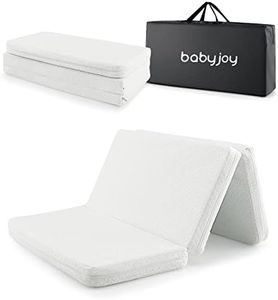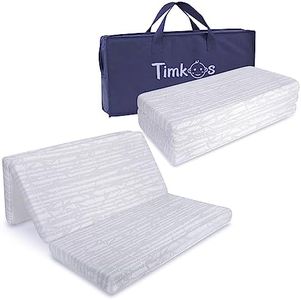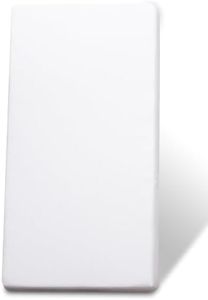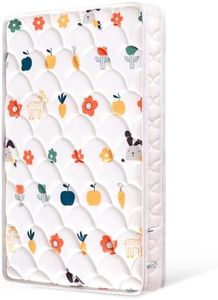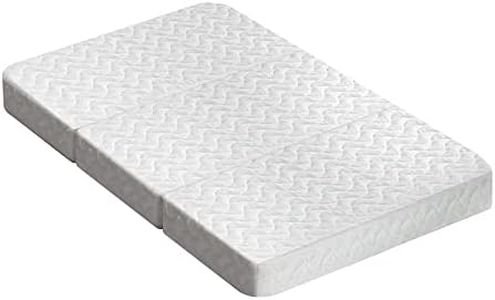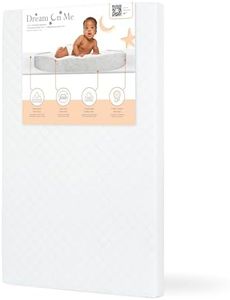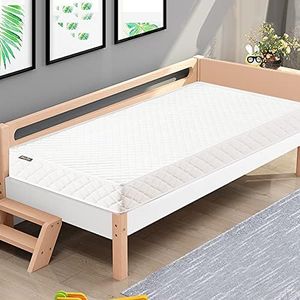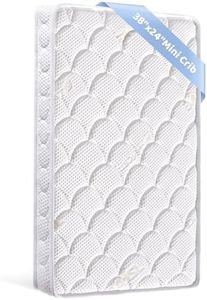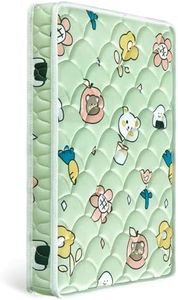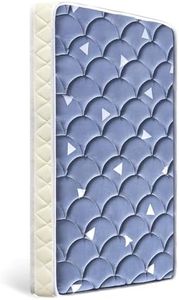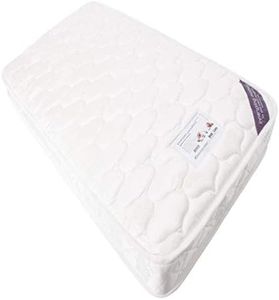We Use CookiesWe use cookies to enhance the security, performance,
functionality and for analytical and promotional activities. By continuing to browse this site you
are agreeing to our privacy policy
10 Best Mini Cribs Mattress
From leading brands and best sellers available on the web.Buying Guide for the Best Mini Cribs Mattress
Choosing a mini-crib mattress is an important step to ensure your baby's comfort and safety. Mini-cribs are a popular choice for smaller spaces or as a secondary bed, so the right mattress is essential for a good fit and restful sleep. When selecting a mini-crib mattress, focus on safety, comfort, and compatibility with your mini-crib. Consider how long you plan to use it, your baby's sleeping habits, and special needs such as hypoallergenic materials.Size and FitSize and fit refer to the mattress dimensions and how well it matches your mini-crib. This is crucial because a mattress that is too small can leave dangerous gaps at the sides, increasing the risk of entrapment, while one that's too large won't fit the crib at all. Mini-crib mattresses usually measure around 24 inches by 38 inches, but check your crib’s manual for the exact size needed. Always test the fit before use—if you can fit more than two fingers between the mattress and crib sides, it's too small. The right fit keeps your baby safe and comfortable.
FirmnessFirmness is about how hard or soft the mattress feels, and it is especially important for infant sleep safety. Newborns and young babies need a firm, supportive surface to reduce the risk of suffocation and sudden infant death syndrome (SIDS). Mini-crib mattresses labeled 'infant firm' provide this support, while some have a dual-sided feature with a softer side for toddlers. Always choose a mattress that is firm for babies unless your child has reached the toddler stage and your pediatrician advises otherwise. Gently press the center and edges of the mattress to see if it feels too soft or sags easily—it should bounce back when you release.
Material and CoverThe material and cover refer to what the mattress is made from and what encases it. Common core materials include foam and innerspring, each offering different qualities. Foam is lightweight and easy to handle, while innerspring is more traditional and can last longer. The cover is often made of vinyl, organic cotton, or waterproof fabrics. For easy cleaning and allergen reduction, a waterproof or wipe-clean cover is useful, while natural materials may appeal to those wanting fewer chemicals. Consider if quick cleanup or low-allergen features are important for your family, especially if spills or sensitivities are a concern.
BreathabilityBreathability is about how well air moves through the mattress, which helps regulate temperature and reduce the risk of overheating. Some mini-crib mattresses use special fabrics or designs to promote airflow, keeping your baby cool and comfortable. If you live in a hot climate or worry about your baby getting sweaty at night, look for mattresses with breathable materials or ventilated sides. Testing for breathability can be as simple as reading product descriptions or reviews mentioning air circulation.
WeightWeight refers to how heavy the mattress is, and this can impact how easy it is to lift, move, or change sheets. Lighter foam mattresses are generally easier for quick bedding changes, while heavier innerspring mattresses may stay in place better but can be more challenging to handle. If you expect to move the mattress frequently—for example, to change sheets or take it to another room—a lighter option may be best. If stability is more important than portability, a heavier mattress could work for you.
